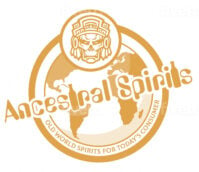Amazonia manioc chicha.
TL;DR
Across Amazonia, communities turn detoxified manioc (cassava) into short-fermented chicha—prepared with presses, mashes, and sometimes saliva starters—fueling work parties, rituals, and regional hospitality networks.
Snapshot
- Region / Culture: Amazonia — diverse riverine societies (Upper & Lower Amazon, Orinoco, Andean foothills)
- Period: Deep time with strong ethnographic/archaeological continuity into the present
- Drink(s): Manioc chicha (also called masato, caxiri, caiçuma; recipes vary)
- Evidence types: Presses (tipití), woven strainers, large jars, griddles; botanical/residue studies; settlement middens and feast contexts
- Context of use: Communal work feasts, rites of passage, visiting diplomacy, and everyday sharing
What the evidence shows
- Detox + starch control: Bitter manioc requires grating, pressing, and heating to remove toxins; both bitter and sweet varieties are used for drinks after processing.
- Fermentation strategies: Chicha can be saliva-started (enzymes convert starch to sugar) or cooked-mash + back-slop (using a previous batch/starter); fermentation often runs 1–3 days for a fresh, low-ABV drink.
- Household to communal scale: Toolkits (presses, strainers, vats) and refuse deposits indicate routine household production that scales up for collective events.
- Networks: Portable drink + canoe mobility = visiting circuits and inter-community ties along rivers.
Production & preparation
- Ingredients: Manioc (bitter and/or sweet), water; optional fruit/honey adjuncts (e.g., açaí, peach palm).
- Process (typical pathways):
- Grate roots → press in a tipití (long woven press) to expel toxic juice.
- Cook the meal/juice; cool to warm.
3a) Saliva-start: small portions chewed and mixed back (amylase breaks starch). OR
3b) Cooked-mash: inoculate with starter from a prior batch. - Ferment in jars/crocks/gourds 1–3 days (longer = stronger/sourer).
- Strain/serve fresh; adjust thickness with water.
- Vessels & tools: Tipití press, woven sieves, big pots/jars, wooden paddles, gourd/cuia cups.
- Flavor & body: Ranges from lightly sour and thin to porridge-like; chill/serve fresh for best taste.
Social rules & settings
- Who makes it: Often coordinated by women’s work groups (local variation applies).
- When/where: House yards, communal houses, and riverside feasts after collective labor (gardens, fishing, house-building).
- Etiquette: Sharing bowls signals welcome, alliance, and respect; order of serving can encode status/kin roles.
Why it matters
- Staple economy: Manioc chicha converts gardens into shareable calories and hydration in hot, humid settings.
- Ritual & politics: Drinking sequences organize work parties, rites, and visiting, binding communities across waterways.
- Technology & knowledge: Presses, fermentation timing, and recipe tuning show fine-grained expertise adapted to local manioc varieties.
Connections to the Tour
- Region: Amazonia
- Related themes: Gardens & earthworks, river travel, feast middens, anthropogenic dark earths (long-term household activity).
- See also: Amazonia → Customs & Beverages and Daily Life & Diet entries on manioc processing.
Images
- Featured: Tipití press in use or a bowl of manioc chicha (clear credit).
- Inline ideas:
- Woven strainers and presses (artifact board)
- Large fermentation jars / communal house context
- Map sketch of river routes and garden plots
Sources & further reading
- Ethnographic accounts of manioc processing and chicha (tipití, strainers, fermentation)
- Archaeological studies on Amazonian foodways, feasting deposits, and settlement organization
- Regional syntheses on river networks and hospitality/visiting traditions
—
Publish checklist for this post
- Categories:
- ✅ Amazonia (Region)
- ✅ Beverage Use (Editorial) → set Primary (Rank Math/Yoast)
- Tags (suggested):
manioc,cassava,chicha,masato,caxiri,tipití,Amazonia,feasting,fermentation - Featured image: 16:9, ≤250 KB, alt: “Tipití manioc press and gourd cup for Amazonian chicha”
- Excerpt: Paste/trim the TL;DR (~20–25 words)
- SEO title: Manioc Chicha in Amazonia — Press, Mash, and Communal Feasts | Ancestral Spirits
- Meta description (≤155): Detoxified manioc becomes short-fermented chicha across Amazonia—presses, mashes, and communal sharing that power work parties and ritual ties.
